#Jacobabad
Photo

2022: A woman drinks a plum and tamarind drink to cool off during a heatwave, in Jacobabad. [Akhtar Soomro/Reuters]
67 notes
·
View notes
Text
Así es vivir en una de las ciudades más calurosas del mundo
Así es vivir en una de las ciudades más calurosas del mundo
Jacobabad, una ciudad de 300.000 habitantes, es la zona cero de un planeta en calentamiento. Los científicos dicen que podría ser inhabitable en unas pocas décadas.
SH
Por Sahar Habib Ghazi
UN NIÑO DE UNA COMUNIDAD DE PRODUCTORES DE ARROZ EN JACOBABAD, PAKISTÁN, VIGILA A LOS BÚFALOS DE AGUA DE SU FAMILIA MIENTRAS SE BAÑAN EN UN CALOR SIN PRECEDENTES.
JACOBABAD, Pakistán – Los vendedores de…

View On WordPress
0 notes
Photo

Pakistan ravaged by climate change
The accumulation of increasingly violent phenomena threatens the population, already weakened by the government's lack of management and prevention.
by @Victor_Simonnet
Unprecedented heat waves from March to June
During this period, both Pakistan and northwestern India record temperatures of 6°C to 9°C above seasonal norms, according to the Pakistan Meteorological Service.
Jhelum, 47°C on April 14
Jacobabad, 51°C on May 14
Nawabshah, 50.5°C on May 14
In 2022 the monsoon started in June, earlier than expected. July 2022 was the wettest month in over sixty years (1961).
The Indus River, the backbone of the country, is both a communication route and a source of drinking and irrigation water for agriculture. Pakistan depends on this strategic river, already weakened by the developments carried out by India upstream.
The province of Balochistan, usually spared by the monsoon, has recorded rainfall five times higher than average since July.
The province of Sind provides a quarter of the country's agricultural production. The spring drought caused the wheat harvest to drop by 20%. More than 1 million hectares of crops were flooded.
With more than 200 million inhabitants and a population growth rate of 2.4% per year, urbanization is accelerating. Towns sometimes develop in flood-prone areas, rivers are modified and their approaches are concreted. The artificialization of the soil reinforces the phenomenon of runoff.
Pakistan is particularly vulnerable to flooding. In 2010 these had caused the death of 2,000 people and caused damage close to 40 billion dollars. Since then, these violent phenomena have become more frequent.
As temperatures rise, glaciers are melting and feeding the flow of rivers. High altitude glacial lakes fracture and suddenly release huge amounts of water. Thirty lakes threaten more than 7 million people.
The cold equivalent of the El Nino phenomenon causes a cooling of part of the surface waters of the Pacific, influencing the cycle of precipitation and the climate of certain regions of the globe. While its usual duration is two years, La Nina conditions persist for the third year in a row.
Le Monde, September 3, 2022
67 notes
·
View notes
Text
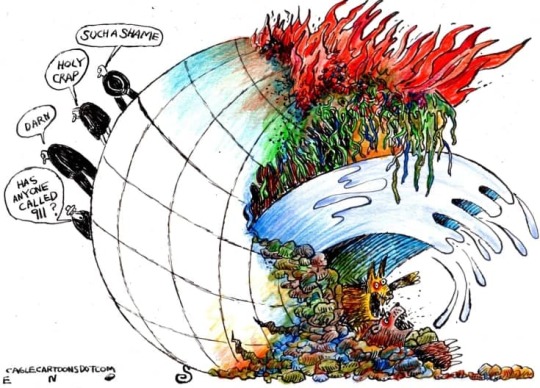
Randall Enos
* * * *
We are declaring a climate emergency. Everyone can, in whatever place on Earth they call home. No one needs to wait for politicians any more – we have been waiting for them for decades. What history shows us is that when people lead, governments follow. Our power resides in what we are witnessing. We cannot deny that Great Salt Lake is vanishing before our eyes into a sun-cracked playa of salt and toxic chemicals. Nor can we deny that Lake Mead is reduced to a puddle. In New Mexico a wildfire that began in early April is still burning in late July. Last August, the eye of Hurricane Ida split in two – there was no calm – only 190mph winds ripping towns in the bayous of Louisiana to shreds; and 7m acres in the American west burned in 2021. The future the scientists warned us about is where we live now.
The climate emergency has been declared over and over by Nature and by human suffering and upheaval in response to its catastrophes. The 2,000 individuals who recently died of heat in Portugal and Spain are not here to bear witness, but many of the residents of Jacobabad in Pakistan, where Amnesty International declared the temperatures “unlivable for humans”, are. The heat-warped rails of the British train system, the buckled roads, cry out that this is unprecedented. The estimated billion sea creatures who died on the Pacific north-west’s coast from last summer’s heatwave announced a climate emergency. The heat-devastated populations of southern Asia, the current grain crop failures in China, India, across Europe and the American midwest, the starving in the Horn of Africa because of climate-caused drought, the bleached and dying coral reefs of Australia, the rivers of meltwater gushing from the Greenland ice sheet, the melting permafrost of Siberia and Alaska: all bear witness that this is a climate emergency. So do we. Yet the anxiety we feel, the grief that is ours, pales in comparison to the ferocity of our resolve.
We can choose to live differently and build wiser and more just ways to produce, consume and travel. Our hope lies in our collective actions. A climate emergency means that it’s time for business as usual to halt, for our priorities to shift and to recognize our responsibility to those on the frontlines of the climate crisis. This emergency, which did not begin suddenly and will not end in our lifetimes, nevertheless needs our urgent response. This means doing all we can to stabilize the health of the planet and speed the transition away from fossil fuels. Now. Between the scientists and engineers, philosophers and poets, Indigenous leaders, climate activists and engaged youth, we know what to do and how to do it. We have a multiplicity of tools, we have a kaleidoscopic vision where each of us can offer up the gifts that are ours, and most importantly, we have the spiritual will to change the course of our destiny on fire.
The future needs us. We need each other. At a time when the majority of Americans want to see serious climate action, too many politicians have failed us and undermined those who are trying. We ourselves must respond for those who will be born next week and next decade and next century, who need a planet alive and flourishing in all its exquisite diversity of land and creatures and humans. We have no right to rob them or the young people staring at a chaotic future now of their birthright. We do not represent them, but we can represent ourselves, as people in solidarity with all life. In that spirit, we join those around the world who have already declared a climate emergency, and we invite everyone to join us.
Rebecca Solnit is a Guardian US columnist
Terry Tempest Williams is a writer, naturalist, and activist
#climate emergency#Randall Enos#Rebecca Solnit#Terry Tempest Williams#climate#activism#earth#Climate change
14 notes
·
View notes
Text
"Tsunami Alert: How Karachi is Preparing for the Worst"
The Threat of Tsunami in Karachi

KARACHI: Due to the possibility of intensifying monsoon currents in Sindh starting tomorrow (Tuesday). the Met office issued an urban flooding advisory for Karachi and other cities on Monday.
Dr. Sardar Sarfaraz, chief meteorologist, noted that the current weather system was anticipated to gradually get worse, first affecting southeast portions of Sindh on Tuesday afternoon or in the evening, and then affecting northeast areas, including Karachi, late at night with sporadic heavy rainfall. According to him, the heaviest rain is predicted to fall starting on June 11 when the low pressure region that is developing in eastern India would enter Pakistan and gather strength from the weather over the Arabian Sea. "After that, it probably will have an impact on all of Sindh. But prior to that, there would be intermittent mild to high falls in numerous areas of the province, he added, noting that the current weather pattern had obstructed the sea breeze, making Karachi hot and muggy.
Areas Which May Be Affected:

According to the Met department advisory, sea conditions are predicted to turn difficult or very rough from Jun 10 through 15, and fishermen are urged to exercise additional caution.rain-thunderstorms with scattered heavy falls are expected in Tharparkar, Umerkot, Mirpurkhas, Badin, Tando Mohammad Khan, Tando Allahyar, Hyderabad, Matiari, Thatta, Sujawal, Sanghar, Shaheed Benazirabad, Khairpur, Sukkur, Larkana, Ghotki, Kashmore, Shikarpur, Jacobabad, Dadu, Jamshoro and Qambar Shahdadkot during Jun 9-15.
In low-lying parts of Karachi, Hyderabad, Badin, Thatta, Sujawal, Tando Muhammad Khan, Tando Allahyar, Dadu, Jamshoro, Qambar Shahdadkot, Larkana, and Sukkur throughout the projected period, heavy rains may cause water logging or urban flooding.
From June 12, rainfall intensity is also anticipated to increase in Balochistan's northeastern and southern districts, which could result in flash floods in the districts of Dadu, Jamshoro, Qambar Shahdadkot, and downstream.
It further said that more strain could be placed on Hub dam, Thaddo dam, and areas downstream by persistently heavy rainfall over the Khuzdar, Lasbela, and Hub districts and across the Kirthar range.
History Of Floods & Tsunami In Coastal Belt Of Pakistan:
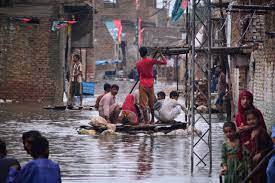
Karachi, the largest city in Pakistan, is located on the coast of the Arabian Sea. While the city has not experienced a tsunami in recent history, experts have expressed concern that any major earthquake could trigger a tsunami along Karachi's coast due to deep seas and unusual underground geographical changes.
In 1945, a deadly earthquake occurred 100 miles south of Karachi in the Northern Arabian Sea, triggering a tsunami which resulted in the loss of over 4,000 lives. Since then, no tsunami has occurred off the coast of Karachi. However, the location of the city makes it susceptible to a host of climatic disasters.
Legislation is essential to timely evacuate residents from coastal settlements in the event of an earthquake. In 2005, following an earthquake in Muzaffarabad, the seismic center of Karachi was made more efficient and three tsunami warning towers have been installed since then.
Geography:
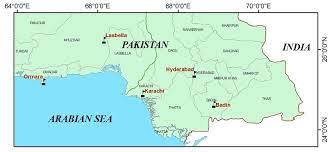
Geographically, the coastal belt of Sindh and Balochistan, which covers an area of 1,100 km, has witnessed tsunamis triggered by earthquakes as well as islands emerging in the coastal areas. These extraordinary activities certainly point to the presence of underground gases and other factors.
Risk Of Tsunami:

According to Ameer Haider Laghari, Director Meteorological Department, Karachi, earthquakes have two causes: one is fault line and the other is boundary line. The risk of tsunami in Karachi cannot be ruled out due to the presence of three seismic plates in which the subdivision is slowly sinking.
Measures Taken By Government:
Two more warning towers have been installed in coastal areas of Balochistan in Gwadar and Pisni. About 14 towers will be installed by the National Disaster Management Authority (NDMA) at various places in Sindh in the near future. The main purpose of installing these towers is to warn residents of coastal areas in case of any emergency.
Tide gauges have been installed at various coastal areas of Sindh and Balochistan to monitor sea waves. In this regard, not only is the situation monitored but also alerts are issued if the height of waves exceeds 6 meters. A tsunami alert is usually issued for an earthquake measuring 6.5 on the Richter scale in the Arabian Sea.
Pakistan Meteorological Department (PMD):

The Pakistan Meteorological Department (PMD) holds responsibility for seismic monitoring and tsunami early warning in Pakistan. It is their liability to disseminate earthquake information to government and non-government organizations as well as to the public after any event occurs.
All stations are linked with central recording stations at Karachi and Islamabad through satellite communication systems. Beside broad band stations, a parallel program for installing short period (1s) sensors for close monitoring of faults and local seismicity is running.
Floods In The History:
In addition to tsunamis, Pakistan has also experienced severe flooding throughout its history. In August 2010, Pakistan suffered one of its most severe floods that affected approximately 20 million people and destroyed homes, crops and infrastructure. The floods caused over $14.9 billion worth of damage and $15.2 billion worth of economic losses.
The housing; agriculture and livestock; and transport and communications sectors suffered the most significant damage at $5.6 billion; $3.7 billion; and $3.3 billion respectively. Sindh was the worst affected province with close to 70 percent of total damages and losses followed by Balochistan; Khyber Pakhtunkhwa; and Punjab.
The floods affected 33 million people and more than 1730 lost their lives. They particularly impacted the poorest and most vulnerable districts with flood waters stagnant in many areas causing water-borne and vector-borne diseases to spread. More than 8 million displaced people faced a health crisis with loss of household incomes; assets; rising food prices; and disease outbreaks impacting vulnerable groups.
Women suffered notable losses particularly those associated with agriculture and livestock. The national poverty rate may increase by 3.7 to 4 percentage points potentially pushing between 8.4 and 9.1 million more people below poverty line while multidimensional poverty can potentially increase by 5.9 percentage points implying that an additional 1.9 million households are at risk of being pushed into non-monetary poverty.
National Flood Protection Plan:
The government has already started updating its national flood protection plan by adopting global best practices for updating its flood risk framework. Early warning systems that make use of weather data and modeling can alert authorities to an expected flood and give them time to start evacuations and put in place contingencies for critical sectors such as agriculture.
International Water Management Institute (IWMI):

Flood inundation models developed by the International Water Management Institute (IWMI) and partners have helped to anticipate the depth and extent of flooding in Sri Lanka allowing governments and communities to take preemptive measures that reduce the negative effects.
Insurance schemes supported by the government can also help small-scale farmers; businesses; and households recover after a climate event. IWMI and its partners have piloted index-based flood insurance in India and Bangladesh offering protection for agricultural livelihoods during floods limiting the long-term effect on food systems and food security.
Compensation:
Compensation for flood damage to crops totaled $150,000 between 2017 and 2020 allowing 7,000 families to repair their homes and farms and recover from the losses. Another example is the use of nature-based solutions or green infrastructure to harness the ability of ecosystems like wetlands to regulate water flow and absorb flood water.
CONCLUSION
In conclusion, while Karachi has not experienced a tsunami in recent history it is important for residents and authorities to remain vigilant and prepared for such an event. The installation of warning towers and tide gauges along with legislation for timely evacuation are important steps towards ensuring safety of residents in case of a tsunami.
Thanks For Reading Thë Denìzer by Sultan Muhammad Yamin!
#the denizer#thë denìzer#karachi#flood warning#breaking news#news#karachi news#tsunami#epilepsy warning#biparjoy
3 notes
·
View notes
Text
Long Reads Triptych: Climate Change Edition
June 1 officially kicked off hurricane season, lasting through November, and another storm-packed, potentially deadly and expensive few months are predicted.
The National Oceanic and Atmospheric Administration (NOAA) is forecasting an above-normal hurricane season in the Atlantic, with up to 21 named storms this year. Ten storms could become hurricanes, the agency says — and three to six storms may reach category 3, 4 or 5. Follow the latest at hurricanes.gov. (x)
**
As the West endures another year of unrelenting drought worsened by climate change, the Colorado River’s reservoirs have declined so low that major water cuts will be necessary next year to reduce risks of supplies reaching perilously low levels, a top federal water official said Tuesday.
Bureau of Reclamation Commissioner Camille Calimlim Touton said during a Senate hearing in Washington that federal officials now believe protecting “critical levels” at the country’s largest reservoirs — Lake Mead and Lake Powell — will require much larger reductions in water deliveries.
“A warmer, drier West is what we are seeing today,” Touton told the Senate Energy and Natural Resources Committee. “And the challenges we are seeing today are unlike anything we have seen in our history.” (x)
**
Jacobabad, a city of 300,000, is ground zero of a warming planet. It is one of two cities on Earth that has passed heat and humidity thresholds that are hotter than the human body can handle. But it is arguably the most vulnerable to climate change. Heat exhaustion and heat stroke are a daily obstacle the city’s largely poor residents navigate, in addition to a water crisis and power outages that last 12-18 hours a day. Most save up to buy a single solar panel to cool their homes with a fan. But the city’s policy makers are not prepared, nor are they planning for a large-scale heatwave.
The private water station that VICE World News visited is run by a businessman who sits in the shade while watching the sellers squabble for their turn. He didn’t want to share his name because his business falls into a grey area of regulation. The city administration turns a blind eye to the private water sellers and water station owners, because they are meeting a basic need, but technically they are exploiting a water crisis. Pakistan is the third most water-stressed country in the world, and the situation is much more dire in Jacobabad.
The station owner said that at night, he sleeps in air-conditioning, while his family lives 250 miles away. “It’s too hot for them to live here,” he told VICE World News while claiming the city’s piped water is unreliable and filthy that’s why people buy from him. He said his take home is $2,000 a month. On good days, the water sellers, who buy from him and sell to locals, make enough profit to keep them right above Pakistan’s poverty line. (x)
12 notes
·
View notes
Text
Climate-linked ills threaten humanity
SEPT. 5,2023 "Pakistan is the epicenter of a new global wave of disease and death linked to climate change, according to a Washington Post analysis of climate data, leading scientific studies, interviews with experts and reporting from some of the places bearing the brunt of Earth’s heating. This examination of climate-fueled illnesses — tied to hotter temperatures, and swifter passage of pathogens and toxins — shows how countries across the globe are ill-prepared for the insidious, intensifying risks to almost every facet of human health."
Pakistan experiences some of the most intense heat on the planet. Cities such as Jacobabad and Hyderabad are projected to have several months each year when conditions are so extreme that even people in the shade face health risks.
Jacobabad has always had high temperatures in the summer but climate change is fueling heat waves that arrive earlier and last longer than ever before, which may eventually make the area uninhabitable for even healthy humans, experts say. In Jacobabad, a wet-bulb globe temperature of at least 90 degrees will prevail for a third of the year by 2030, The Post analysis found.
Scientists say the higher the wet-bulb globe temperature climbs, the more difficult it becomes to keep cool and the heart and the kidneys can fail as they work overtime to maintain blood pressure and the flow of fluid in the body.
If the air is too moist to absorb sweat, a person’s internal body temperature will continue to rise. The heart pumps faster and blood vessels expand to move more blood closer to the skin, in order cool off. At the same time, the brain sends a signal to send less blood to the kidneys to stop losing liquid through urine, which deprives the kidneys of oxygen.
The wet-bulb globe temperature combines the regular air temperature (“dry-bulb”), the humidity-adjusted temperature (“wet-bulb”) and the radiant heat from the sun and hot surfaces (“globe temperature”) to capture heat stress.
While every human body is different, many experts and institutions cite just under90 degrees as the wet bulb globe temperature beyond which the risks of heat illness become very severe."
"The U.S. Marine Corps cancels all physical training at 90 degrees."
READ MORE https://www.washingtonpost.com/climate-environment/interactive/2023/pakistan-extreme-heat-health-impacts-death/
Wapo analysis examines impact of climate change on human health Sept.7,2023
Washington Post (Wapo) "Pakistan continues to suffer the impacts of climate change in the form of floods and fires. The climate catastrophes have also brought about a major health crisis there. The Washington Post's Annie Gowen recently reported from Pakistan on the country's health crisis related to climate change, visiting hospitals and villages to speak those directly affected. She spoke to The World's Marco Werman about her investigation and what she found."
0 notes
Photo
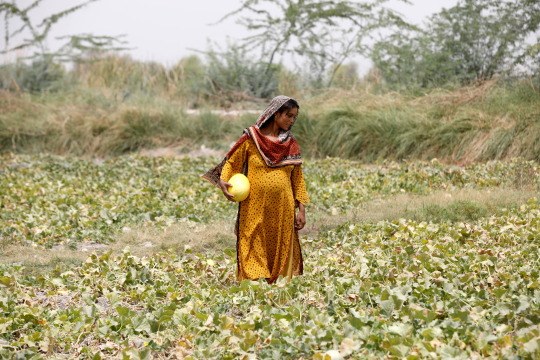
2022: Sonari collects muskmelons at a farm on the outskirts of Jacobabad. 'When the heat is coming and we're pregnant, we feel stressed,' said Sonari, who is in her mid-20s. [Akhtar Soomro/Reuters]
46 notes
·
View notes
Text
Pakistan #Abbottabad,#Ahmadpur#East,#Alipur,#Arifwala,#Attock,#Azad#Kashmir,#Badin,#Bagh,#Bahawalnagar,#Bahawalpur,#Bannu,#Basirpur,#Batkhela,#Battagram,#Bhalwal,#Bhawana,#Bhera,#Bhimber,#Burewala,#Chakdara,#Chakwal,#Chaman,#Charsadda,#Chichawatni,#Chiniot,#Chishtian,#Chitral,#Chowk#Azam,#Chunian,#Dadu,#Dadyal,#Daharanwala,#Dargai,#Daska,#Depalpur,#Dera#Allahyar,#Dera#Ghazi#Khan,#Dera#Ismail#Khan,#Dera#Murad#Jamali,#Dijkot,#Dina,#Dinga,#Farooqabad,#Fateh#Jang,#Fort#Abbas,#Gaggoo#Mandi,#Ghakhar#Mandi,#Ghotki,#Gojra,#Gujar#Khan,#Gujranwala,#Gujrat,#Gwadar,#Hafizabad,#Hangu,#Harappa,#Haripur,#Haroonabad,#Hasilpur,#Hassan#Abdal,#Hattar,#Haveli#Lakha,#Hyderabad,#Jacobabad,#Jahanian#Mandi,#Jalalpur#Jattan,#Jalalpur#Pirwala,#Jampur,#Jamshoro,#Jaranwala,#Jatoi,#Jauharabad,#Jhang,#Jhelum,#Kabirwala,#Kalabagh,#Kalat,#Kallar#Kahar,#Kamalia,#Kamoke,#Kamra,#Kandhkot,#Karachi,#Karak,#Karor#Lal#Esan,#Kashmore,#Kasur,#Khairpur,#Khairpur#Tamewali,#Khanewal,#Khanpur,#Khanqah#Dogran,#Kharian,#Khichi#Wala,#Khushab,#Khuzdar,#Kohat,#Kot#Adu,#Kot#Sultan,#Kotli,#Lahore,#Lakki#Marwat,#Lalamusa,#Larkana,#Latamber,#Layyah,#Liaquatpur,#Lodhran,#Loralai,#Lower#Dir,#Mailsi,#Malakand,#Malakwal,#Mandi#Bahauddin,#Mandi#Yazman,#Mansehra,#Mardan,#Mastung,#Matiari,#Mian#Channu,#Mianwali,#Minchanabad,#Mingora,#Mirpur,#Mirpur#Khas,#Moro,#Multan,#Muridke,#Murree,#Muslim#Bagh,#Muzaffarabad,#Muzaffargarh,#Nankana#Sahib,#Narowal,#Naushahro#Feroze,#Nawabshah,#Nooriabad,#Nowshera,#Nowshera#Virkan,#Nushki,#Okara,#Okara#Cantt,#Pabbi,#Pakistan,#Pakpattan,#Panjgur,#Pasrur,#Pattoki,#Peshawar,#Phalia,#Pind#Dadan#Khan,#Pindi#Bhattian,#Pindigheb,#Piplan,#Pir#Mahal,#Qila#Saifullah,#Quetta,#Rahim#Yar#Khan,#Raiwind,#Rajanpur,#Ranipur,#Rawalakot,#Rawalpindi,#Rohri,#Sadiqabad,#Safdarabad,#Sahiwal,#Sambrial,#Samundri,#Sarai#Alamgir,#Sargodha,#Shahkot,#Shakargarh,#Sheikhupura,#Shujaabad,#Sialkot,#Sibi,#Sukkur,#Swabi,#Swat,#Talagang,#Tando#Adam,#Tando#Allahyar,#Taunsa#Sharif,#Taxila,#Tharparkar,#Thatta,#Timergara,#Upper#Dir,#Mirpur#Mathelo,#Kamber#Ali#Khan,#Tando#Muhammad#Khan,#Daharki,#Topi,#Umerkot,#Ferozewala,#Kot#Abdul#Malik
0 notes
Text
Les équipes de secours se sont précipitées sur le site de l'accident immédiatement après avoir reçu la nouvelle et ont transféré les blessés vers les hôpitaux. (Image représentative/News18)Le bus, avec les fidèles, était sur le chemin du retour à Jacobabad depuis Sakhi Sarwar lorsqu'il s'est renversé après que le conducteur a perdu le contrôle du véhicule alors qu'il s'endormait.Au moins cinq personnes ont été tuées et 20 autres grièvement blessées dimanche lorsqu'un bus transportant des fidèles s'est renversé dans la province pakistanaise du Pendjab après que le conducteur s'est endormi, a indiqué la police.L'incident s'est produit dans la région de Fazilpur, dans le district de Rajanpur du Pendjab.Le bus, avec les fidèles, était sur le chemin du retour à Jacobabad depuis Sakhi Sarwar lorsqu'il s'est renversé après que le conducteur a perdu le contrôle du véhicule alors qu'il s'endormait, ont déclaré des responsables de la police au journal The Express Tribune.Les équipes de secours se sont précipitées sur le site de l'accident immédiatement après avoir reçu la nouvelle et ont transféré les blessés vers les hôpitaux.Les personnes gravement blessées ont été transférées à l'hôpital du district de Rajanpur, tandis que les autres ont été transférées dans un hôpital local à Fazilpur.Au moins cinq personnes, dont une femme et deux enfants, ont été tuées dans l'accident, ont indiqué des responsables de la police. Le responsable du district des services de secours, le Dr Aslam, a déclaré que l'accident s'était produit alors que le conducteur du bus avait perdu le contrôle en s'endormant.L'accident survient quelques jours après une autre tragédie de bus dans la région de Geeti-Das près de Babusar Top, qui a tué huit personnes et en a blessé plusieurs autres.Le bus touristique est tombé dans une gorge profonde alors qu'il naviguait dans un virage serré sur le terrain montagneux et a pris feu vendredi.Le 16 juillet, six personnes ont été tuées dans un accident de bus similaire dans la région de Thalichi du district de Diamer.(Cette histoire n'a pas été éditée par le personnel de News18 et est publiée à partir d'un flux d'agence de presse syndiqué - PTI)
0 notes
Text
Love 'only' factor that pushed Pakistani woman to enter India to live with Hindu man: Intel agencies
While Seema was arrested on July 4 for illegally entering India without a visa via Nepal with her four children, all aged below seven years, her lover Sachin is behind bars for sheltering them.

LAHORE: Pakistan’s intelligence agencies have informed the government that love is the “only” factor that led a mother of four to sneak into India to live with a Hindu man whom she befriended through an online game platform, a media report said on Monday.
Seema Ghulam Haider from Karachi in Sindh province and Sachin Meena in India got in touch while playing PUBG in 2019 and a dramatic love story unfolded between the two living more than 1,300 km apart, in countries not too friendly to each other.
Seema, 30, and Sachin, 22, live in the Rabupura area of Greater Noida, near Delhi, where he runs a provision store, according to Uttar Pradesh Police.
“Pakistani woman Seema Haider left the country only to marry an Indian man (Sachin Meena) out of love as no other factor/motive has come to forth so far,” local Urdu daily, Jang, reported, quoting a report of the Pakistani intelligence agencies.
“According to the Pakistani intelligence agencies report, no other factors/motives except ‘love’ with Hindu Indian man appears to be the reason for leaving the country. The report has been submitted to the government,” it said.
While Seema was arrested on July 4 for illegally entering India without a visa via Nepal with her four children, all aged below seven years, Sachin was put behind bars for sheltering the illegal immigrants.
Both of them were later released from jail.
Mian Mithoo, a high-profile religious leader in rural Sindh, known for using his seminary to convert Hindu girls to Islam and even bandits, has openly threatened to punish Seema if she returns.
His supporters have also threatened to attack Hindu worship places in Seema’s village.
On Sunday there were reports of an attack on Radha Swami Darbar Temple in Sindh.
Jacobabad General Hindu Panchayat president Lalchand Seetlani and other office-bearers have condemned the attack.
Meanwhile, the Human Rights Commission of Pakistan has expressed concern over “reports that 30 Hindus have been kidnapped” in Kashmore and Ghotki.
“The HRCP is alarmed by reports of deteriorating law and order in Kashmore and Ghotki, where some 30 members of the Hindu community, including women and children, have been held hostage by organised criminal gangs,” the commission said in a tweet on Sunday.
“Moreover, we have received disturbing reports that these gangs have threatened to attack the community’s sites of worship, using high-grade weapons. The Sindh Home Department must investigate this matter immediately and take steps to protect all vulnerable citizens in these areas,” the HRCP said.
0 notes
Photo
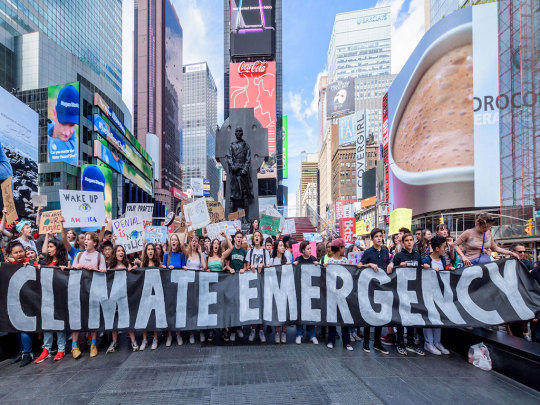
Climate Emergency :: [Rebecca Solnit & Terry Tempest Williams]
* * * *
We are declaring a climate emergency. Everyone can, in whatever place on Earth they call home. No one needs to wait for politicians any more – we have been waiting for them for decades. What history shows us is that when people lead, governments follow. Our power resides in what we are witnessing. We cannot deny that Great Salt Lake is vanishing before our eyes into a sun-cracked playa of salt and toxic chemicals. Nor can we deny that Lake Mead is reduced to a puddle. In New Mexico a wildfire that began in early April is still burning in late July. Last August, the eye of Hurricane Ida split in two – there was no calm – only 190mph winds ripping towns in the bayous of Louisiana to shreds; and 7m acres in the American west burned in 2021. The future the scientists warned us about is where we live now.
The climate emergency has been declared over and over by Nature and by human suffering and upheaval in response to its catastrophes. The 2,000 individuals who recently died of heat in Portugal and Spain are not here to bear witness, but many of the residents of Jacobabad in Pakistan, where Amnesty International declared the temperatures “unlivable for humans”, are. The heat-warped rails of the British train system, the buckled roads, cry out that this is unprecedented. The estimated billion sea creatures who died on the Pacific north-west’s coast from last summer’s heatwave announced a climate emergency. The heat-devastated populations of southern Asia, the current grain crop failures in China, India, across Europe and the American midwest, the starving in the Horn of Africa because of climate-caused drought, the bleached and dying coral reefs of Australia, the rivers of meltwater gushing from the Greenland ice sheet, the melting permafrost of Siberia and Alaska: all bear witness that this is a climate emergency. So do we. Yet the anxiety we feel, the grief that is ours, pales in comparison to the ferocity of our resolve.
We can choose to live differently and build wiser and more just ways to produce, consume and travel. Our hope lies in our collective actions. A climate emergency means that it’s time for business as usual to halt, for our priorities to shift and to recognize our responsibility to those on the frontlines of the climate crisis. This emergency, which did not begin suddenly and will not end in our lifetimes, nevertheless needs our urgent response. This means doing all we can to stabilize the health of the planet and speed the transition away from fossil fuels. Now. Between the scientists and engineers, philosophers and poets, Indigenous leaders, climate activists and engaged youth, we know what to do and how to do it. We have a multiplicity of tools, we have a kaleidoscopic vision where each of us can offer up the gifts that are ours, and most importantly, we have the spiritual will to change the course of our destiny on fire.
The future needs us. We need each other. At a time when the majority of Americans want to see serious climate action, too many politicians have failed us and undermined those who are trying. We ourselves must respond for those who will be born next week and next decade and next century, who need a planet alive and flourishing in all its exquisite diversity of land and creatures and humans. We have no right to rob them or the young people staring at a chaotic future now of their birthright. We do not represent them, but we can represent ourselves, as people in solidarity with all life. In that spirit, we join those around the world who have already declared a climate emergency, and we invite everyone to join us.
Rebecca Solnit is a Guardian US columnist
Terry Tempest Williams is a writer, naturalist, and activist
26 notes
·
View notes
Link
13 Temmuz 2023'te Faislabad'da şiddetli yağmur yağarken bir bisikletçi yola çıkıyor. — ÇevrimiçiKARACHI: Pakistan Meteoroloji Dairesi (PMD) Cuma günü yapmış olduğu açıklamada, çiselemenin bu gece ve Cumartesi gecesi liman kentini ve bitişik bölgeleri ıslatması beklenirken, Sindh'in geri kalanının havasının sıcak ve nemli kalacağını söylemiş oldu.Qambar Shahdadkot, Jacobabad ve Larkana dahil olmak suretiyle Sindh ilçeleri, muhtemelen akşam ve/yada gece süresince gök gürültülü fırtına ve hafifçe yağmurla izole toz alacak. Ayrıca, PMD'ye bakılırsa gece ve/yada sabah kıyı süresince ve Tharparkar bölgesinde çiseleme ve hafifçe yağmur meydana gelebilir. Karaçi'de hava parçalı bulutlu ve nemli duracak ve 14 Temmuz'dan (bugün) 16'ya kadar çiseleme ihtimali var. 15 Temmuz'da da ara sıra batı ve güneybatıdan esen şiddetli rüzgarlarla rutubet olacak.Liman kentinde en yüksek ısı 33°C ile 35°C içinde dalgalanırken, Cumartesi ve Pazar günleri sırasıyla 33°C ile 35°C ve 34°C ile 36°C içinde seyredecek.Karaçi'nin minimum sıcaklığı 29°C'ye kadar düşecek ve sırasıyla 14 ve 15 Temmuz'da 28°C ile 30°C içinde dalgalanacak. Kentin atmosferindeki rutubet oranı bugün yüzde 72 olacak ve önümüzdeki iki gün içinde yüzde 70 ile yüzde 80 içinde artacak.Met Office'e bakılırsa, Umman Denizi'nden gelen muson akıntıları devamlı olarak ülkenin yukarı ve orta kesimlerine nüfuz ediyor ve gelecek günlerde de devam etmesi olası.Bir PMD bildiriminde, "Batıdan esen bir dalganın Cuma günü (akşam/gece) ülkenin üst bölgelerine de girmesi muhtemeldir" yazıyordu.Bugün ve Cumartesi günü Keşmir, Potohar bölgesi, İslamabad, kuzeydoğu ve doğu Pencap, kuzeydoğu Belucistan ve Hayber Pakhtunkhwa'da rüzgarlı ve gökgürültülü yağmur umut ediliyor.Met, "Tahmin döneminde Potohar bölgesi, Keşmir ve yukarı Hayber Pakhtunkhwa'daki izole yerlerde de şiddetli yağışlar olası. Ülkenin başka yerlerinde sıcak ve nemli hava olması olası."Son 24 saatte yurdun birçok yerinde hava sıcak ve nemli olmaya devam etti. Bununla beraber, Faisalabad, Bahawalpur, Dera Ghazi Khan ve Sahiwal dahil olmak suretiyle orta ve cenup Punjab şehirlerinde izole yerlerde rüzgarlı yağmur ve fırtına meydana geldi.Met Office, dünün en yüksek sıcaklığı olan 45°C'nin Dadu (Sindh), Dalbandin ve Nokkundi'de (Belucistan) kaydedildiğini söylemiş oldu.
0 notes
